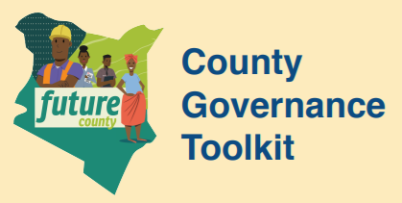A “function” is the responsibility to perform a role and deliver a given service. The Fourth Schedule of the Constitution “distributes” functions between the National Government and County Governments. Any function that is not explicitly assigned to any of the two levels is a National Government responsibility.
Before looking at the list of 14 functions specifically assigned to Counties, it is worth highlighting that the foremost responsibility of both levels of government is to provide for the well-being of citizen through the equitable and accountable provision of services (see objectives of devolution, Art. 174). This is often referred to as general mandate and it should be pursued within the respect of the inter-dependency, consultation and collaboration between levels of government, particularly in those sectors in which both levels share responsibilities (the so-called concurrent functions).
The table below is adapted from part 2 of the Fourth Schedule of the Constitution to show examples of services associated with the functions specifically assigned to County Governments. Note these are examples taken from different county websites— noting that services and departments that have the responsibility for their delivery may have different names between counties.
County departments also have their own corporate functions, that allow them to work as effective governments; these include policy making, planning and budgeting, monitoring and evaluation, performance management, human resource management, etc. – all of which set the foundations upon which the following services can be delivered.
|
Function |
What services does this include? |
Which county departments are usually responsible? |
|
1. Agriculture, including— (a) crop and animal husbandry; (b) livestock sale yards; (c) county abattoirs; (d) plant and animal disease control; and (e) fisheries. |
|
|
|
2. County health services, including, in particular— (a) county health facilities and pharmacies; (b) ambulance services; (c) promotion of primary health care; (d) licensing and control of undertakings that sell food to the public; (e) veterinary services (excluding regulation of the profession); (f) cemeteries, funeral parlours and crematoria; and (g) refuse removal, refuse dumps and solid waste disposal. |
|
|
|
3. Control of air pollution, noise pollution, other public nuisances and outdoor advertising. |
|
|
|
4. Cultural activities, public entertainment and public amenities, including— (a) betting, casinos and other forms of gambling; (b) racing; (c) liquor licensing; (d) cinemas; (e) video shows and hiring; (f) libraries; (g) museums; (h) sports and cultural activities and facilities; and (i) county parks, beaches and recreation facilities. |
|
|
|
5. County transport, including— (a) county roads; (b) street lighting; (c) traffic and parking; (d) public road transport; and (e) ferries and harbours, excluding the regulation of international and national shipping and matters related thereto. |
|
|
|
6. Animal control and welfare, including— (a) licensing of dogs; and (b) facilities for the accommodation, care and burial of animals. |
|
|
|
7. Trade development and regulation, including— (a) markets; (b) trade licences (excluding regulation of professions); (c) fair trading practices; (d) local tourism; and (e) cooperative societies. |
|
|
|
8. County planning and development, including— (a) statistics; (b) land survey and mapping; (c) boundaries and fencing; (d) housing; and (e) electricity and gas reticulation and energy regulation. |
|
|
|
9. Pre-primary education, village polytechnics, homecraft centres and childcare facilities. |
|
|
|
10. Implementation of specific national government policies on natural resources and environmental conservation, including— (a) soil and water conservation; and (b) forestry. |
|
|
|
11. County public works and services, including— (a) storm water management systems in built-up areas; and (b) water and sanitation services. |
|
|
|
12. Firefighting services and disaster management. |
|
|
|
13. Control of drugs and pornography |
|
|
|
14. Ensuring and coordinating the participation of communities and locations in governance at the local level and assisting communities and locations to develop the administrative capacity for the effective exercise of the functions and powers and participation in governance at the local level. |
|
|
